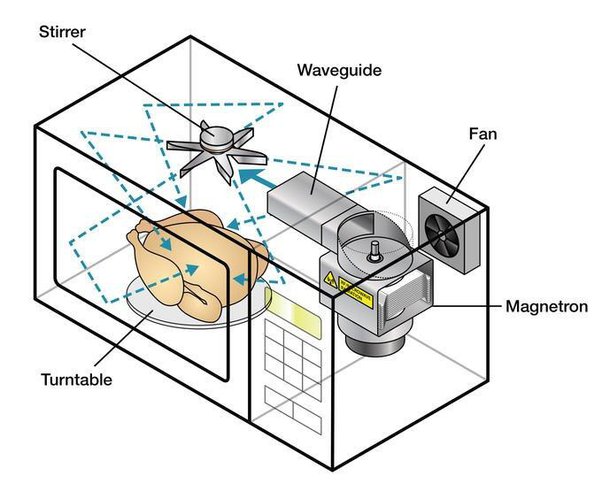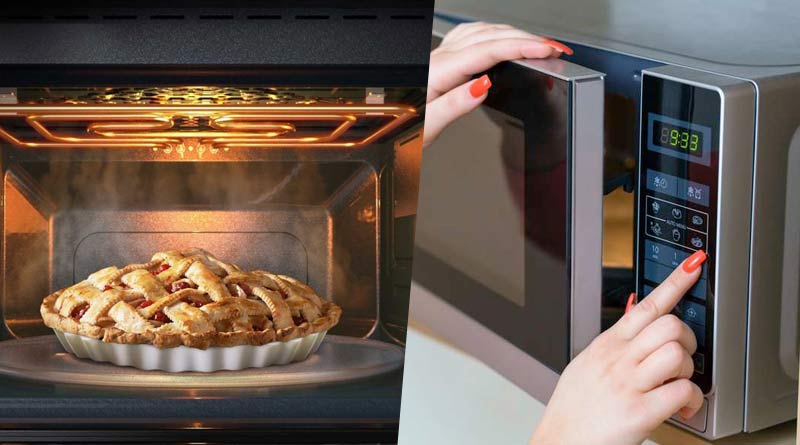Microwave ovens, commonplace in kitchens worldwide, wield a fascinating science to heat our meals swiftly. These appliances utilize microwaves, a type of electromagnetic radiation, to agitate water molecules within food. As these molecules resonate with the microwaves, they generate heat through friction, warming the entire dish. Unlike conventional ovens that heat from the outside, microwaves penetrate the food, ensuring rapid and efficient cooking. In this blog, we unravel the scientific magic behind microwave ovens, exploring the physics that revolutionized the culinary landscape and made quick, convenient meal preparation a reality for millions.
How do microwaves cook food?

“Microwaves, those kitchen workhorses, fundamentally transform electrical energy into culinary heat with ingenious simplicity,” noted Alex Stevens, an appliance expert at Kitchen Innovations. “At their core is a vital component known as the magnetron, nestled within the robust metal confines of the oven. This small but mighty device converts standard electrical power from your wall outlet into potent 12cm (4.7-inch) radio waves.
Upon initiating the cooking process, the magnetron springs to action, unleashing these waves into the food compartment through a conduit known as a waveguide. Within this space, your meal is positioned on a rotating turntable, ensuring an even exposure to the culinary radiation.
The magic unfolds as the microwaves encounter the reflective metal walls, mirroring the principle of light bouncing off a mirror. Yet, unlike a mere reflection, these microwaves delve beyond the surface, penetrating the food itself. It’s here that the culinary alchemy takes place – as microwaves traverse the food, they impart their energy to the molecules within.
This energetic exchange prompts the molecules to vibrate more rapidly, a phenomenon that translates directly into heat. The faster the vibration, the hotter the food becomes. In essence, microwaves not only heat food swiftly but do so uniformly, thanks to their ability to penetrate and energize the molecular structure of the culinary canvas. This science underpins the everyday marvel of the microwave, a culinary companion that turns electrical energy into delectable warmth with remarkable efficiency.”
Do microwaves cook from the inside out?

In the world of cooking, regular ovens and microwaves have their own ways of making food hot. Regular ovens use electric or gas heaters to warm the food from the bottom and sides. This can sometimes lead to uneven cooking like a cake being burnt on the edges and raw in the middle.
People often say microwaves cook from the “inside out,” but that’s not exactly true. What they mean is that microwaves excite molecules all through the food at the same time, making it cook faster and more evenly than a regular oven.
The way food cooks in a microwave depends on what it’s made of. If it has a lot of liquid, like a fruit pie, it might cook from the inside first. But be careful, because the inside can get very hot while the outside stays cool. Foods with water spread out more evenly might cook from the outside, like in a regular oven.
Microwaves are champs at speed cooking, but there’s a catch: their heat doesn’t penetrate deep. Imagine a one-two-centimeter zone of heat! This means large items like roasts get a microwaved outer layer, while the inside relies on traditional heat transfer to cook. Since most microwave meals are bite-sized (think frozen dinners!), even cooking isn’t usually a problem. But for bigger portions, things get tricky. You might end up with a hot, uneven mess – overcooked on the outside and chilly in the center. The key to mastering the microwave is understanding its quirks. Like any cooking method, it has its challenges, but with a little practice, you can whip up quick and delicious meals.
Have you ever noticed microwave dinners saying both “cooking time” and “standing time”? During the standing time, the food keeps on cooking: the hotter parts pass heat to the cooler parts, making sure everything cooks evenly. Understanding these little details helps you get the hang of cooking with a microwave, turning your kitchen into a place for quick and quirky culinary adventures.
In cooking, microwaves and regular ovens have their unique ways of making food hot. Microwaves speed up cooking by making molecules move faster, ensuring even heat. However, microwaving tends to dry out food. Mastering this culinary dance involves knowing how microwaves interact with water molecules, turning it into a scientific kitchen adventure.




